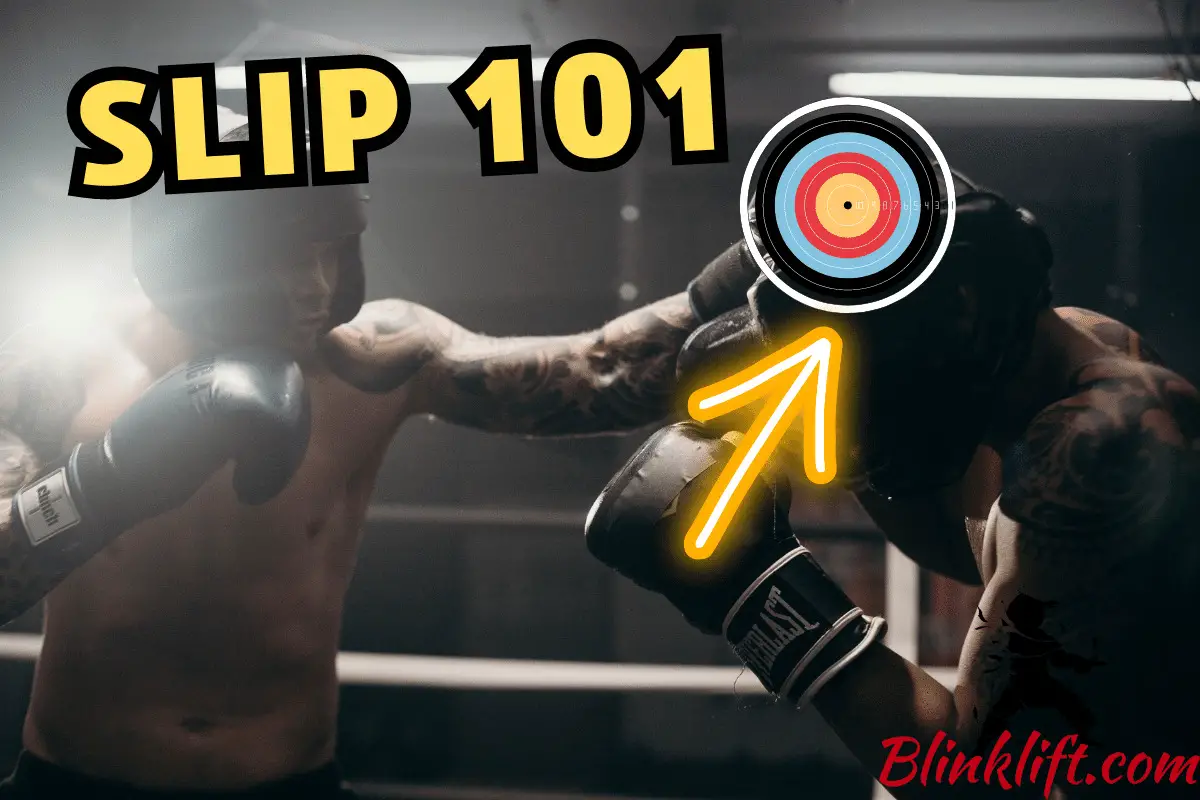If you’re a passionate practitioner of the “Art of Eight Limbs,” you already know the critical importance of defense in this ancient martial art. Whether you’re a seasoned fighter or just beginning your Muay Thai journey, mastering the art of slipping can be a game-changer in your overall technique and strategy.
This is why I’ve decided to write this article. My defense was my weakness for a long time. However, it all changed with a simple mindset shift. This shift is what allowed me to get familiar with so many defensive techniques that allowed me to have excellent defense, especially in comparison to my offensive skills.
So what is this mindset shift? Essentially, I’ve begun breaking down all the defensive techniques I came across in my Muay Thai training. I was the most open-minded I was in all my journey. I stopped feeling negative when someone mentioned my defense as my weakness and instead began working on it more than my offense.
My Muay Thai defense skyrocketed and so can yours. The slip is the technique we’ll break down in this article. What I encourage you to do is practice it like nothing else. When you spar, hit the heavy bag, or do pad work, make sure to practice your slipping techniques.
Before we dive in, if you’re interested in reading about the best Muay Thai punching bags for your money, follow this link.
How to Slip (In Muay Thai)
The first section of this article is going to cover the basic principles of slipping properly in Muay Thai. This article is going to specifically focus on Muay Thai, which means that I’ll offer various strategies and other techniques that combine well with the slip.
Without further introduction, let’s dive into the six essential steps to slip properly in “The Art of Eight Limbs”, aka Thai Boxing.
Step #1 – Awareness
The first step is awareness. To slip properly, you want to avoid being unaware of the opponent’s moves. Can you see what the opponent will do next? if so, utilize it and react accordingly. For instance, the best situation to use the slip is when the opponent throws a jab or a cross. Slipping a hook or an uppercut isn’t as viable and suitable.
To that, you have other options, such as Bob and Weave, Parry, Block, and stepping back.
- Start in your Muay Thai fighting stance with your hands up, protecting your head and face.
- Keep your eyes on your opponent and be aware of their movements and strikes.
Observe the opponent. Make sure to react accordingly. This is key to using the slip properly.
Step #2 – Head Movement
The second step is head movement. You want to move your head swiftly into the side you’re going. For instance, if your opponent throws a punch to your left side, you want to move your head to the right.
- To slip, focus on moving your head quickly and smoothly to the left or right while keeping your upper body relatively stable.
- Imagine drawing a small arc with your head. The movement should be subtle and efficient, not exaggerated.
The last thing you want is to exaggerate the movement and end up in an unsuitable situation to follow through. So slightly move your head to the side.
Step #3 – Bend Your Knees
The third step is to bend your knees for more balance and mobility. Your knees should already be bent, as you’ll do so in your fighting stance. But, if your knees aren’t bent, you want to do so when you move your head.
- Slightly bend your knees to maintain balance and mobility during the slip.
Step #4 – Footwork
Next up, let’s review footwork. Footwork is one of the fundamental skills you must work on if you want to become a solid Muay Thai fighter. I wrote an article on footwork drills that’ll make you a better fighter, which you should definitely read!
- Depending on the direction of the slip (left or right), shift your weight onto the corresponding leg (left leg for slipping left, and right leg for slipping right).
- As you slip, slide your lead foot (the foot on the side you’re slipping to) slightly forward and to the outside of your opponent’s lead foot.
Step #5 – Follow Through (Optional)
The next step is an optional step, and let me tell you why. This step is about following through. Whenever you go for the slip, you can, and should, follow through with a strike. This will make you less predictable and allow you to cause damage by starting with a defensive move.
We’ll review which strikes you want to use in the following part of this article.
Step #6 – Return to Center
The 6th, and final, step is to return to base. Your base is the center, where you initially started the slip from. While it might be obvious to you, some fighters won’t return to the center and end up more vulnerable.
So once you slip and counter, you want to return to the center.
- After slipping the strike, quickly return your head to the center position.
- Reset your stance and be ready to counter-attack if an opportunity presents itself.
Strikes After the Slip in Muay Thai
You now know the basics of slipping in Muay Thai. Let’s now dive into more detail regarding strikes you want to throw after you slip the punch. These are the ones I find the most suitable and that work most of the time. So make sure to try them and experiment with more strikes.
Let’s now dive into the first strike, which is a combination!
Strike #1 – Jab-Cross (1-2)
The first strike is a jab followed by a cross. This combination is the most popular one in Boxing and other striking-based martial arts, such as Kickboxing and even MMA. This combination is also called 1-2.
Once you slip the punch, you want to immediately follow it up with a jab and a cross. This is an excellent way of causing tons of damage to your opponent and leaving him with a nice surprise.

Strike #2 – Hook
The 2nd strike we’ll review is the hook. Once you slip the punch, you want to use the momentum you’ve gained by shifting your weight to the side and chamber it to generate more force. This is why the hook is such a great follow-up to the slip. You’re already shifting your weight to the side, so follow it up by chambering the movement to the other side and throwing a hook.
You can hit both the head and body.

Strike #3 – Step in-Elbow
The next strike we’ll review is the straight elbow. Once you slip the punch, you won’t be in range to follow up with an elbow. So what you want to do is step into the opponent’s safe zone and throw an elbow. This will definitely surprise the opponent and allow you to cause tons of damage swiftly.
Try this out and experiment with it until you get it right.

Strike #4 – Roundhouse Kick
The last strike we’ll review is the Roundhouse Kick. The reason it’s my favorite out of all the follow-ups is because it’s (1) the most powerful and (2) the least expected one.
Once you slip, you want to throw a Roundhouse Kick from the other side you slipped to. That will allow you to generate more force.
Experiment with this follow-up to see just how powerful it can be. Once you get it right, you’ll be able to do it quicker, which will increase your success rate using it.
If you want to execute the Roundhouse Kick faster and with more power, follow this link to learn how.
Final Words
And this is the slip in Muay Thai.
mastering the art of slipping is a game-changer when it comes to improving your Muay Thai defense. By honing this fundamental technique, you can effortlessly evade your opponent’s strikes and create opportunities for powerful counter-attacks. Remember, it takes consistent practice and dedication to perfect your slips, but the payoff is well worth it.
Rome wasn’t built in a day and so won’t your defensive skills. So make sure to work on them all the time to see noticeable results and benefits!
Learning more defensive moves is key to becoming a better Muay Thai fighter. Here are Muay Thai’s best defensive moves you must know to perfect your defense.
Here are other articles you’d benefit from:
How to Catch Kicks in Muay Thai – It’s Actually Simple!
Is the Bob and Weave Used in Muay Thai and MMA?
Check 101 – A Complete Muay Thai Technique Breakdown
Muay Thai Basic Head Movement – Techniques, Drills, and Tips


